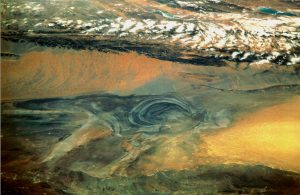By Ankit Panda
On Tuesday, Michael Gordon at the Wall Street Journal wrote a story covering a claim that was to be made by the U.S. State Department’s Bureau of Arms Control, Verification and Compliance (AVC) in its then-upcoming report. Gordon’s article, provocatively titled, “Possible Chinese Nuclear Testing Stirs U.S. Concern,” discussed a new claim from the AVC report, which is designed to give the United States a chance to highlight compliance concerns with other countries’ behavior pertaining to weapons of mass destruction.
The article begins by noting that “China might be secretly conducting nuclear tests with very low explosive power despite Beijing’s assertions that it is strictly adhering to an international accord banning all nuclear tests.” That’s a strong claim, but not one directly supported by a close reading of the AVC report.
The report includes a section titled “Nuclear Testing Moratoria as Interpreted in Accordance With the U.S. ‘Zero-Yield’ Standard.” This section features two subsection, one addressing China (the focus of this discussion) and another on Russia. The language on China in the executive summary of the AVC report is as follows:
China maintained a high level of activity at its Lop Nur nuclear weapons test site throughout 2019. China’s possible preparation to operate its Lop Nur test site year-round, its use of explosive containment chambers, extensive excavation activities at Lop Nur, and lack of transparency on its nuclear testing activities – which has included frequently blocking the flow of data from its International Monitoring System (IMS) stations to the International Data Center operated by the Preparatory Commission for the Comprehensive Nuclear Test-Ban Treaty Organization – raise concerns regarding its adherence to the “zero yield” standard adhered to by the United States, the United Kingdom, and France in their respective nuclear weapons testing moratoria. (emphasis added)
The claim being made here is important to parse correctly. Based on circumstantial signatures at China’s Lop Nur test site and sustained concerns about Chinese non-transparency on nuclear matters, the U.S. Department of State is raising concerns about whether China is abiding to the U.S.-interpreted “zero yield” standard on nuclear testing.
This does not amount to an accusation by the United States that China is undertaking surreptitious low-yield nuclear weapons tests, contrary to the somewhat stronger claim implied in the Wall Street Journal headline. There may be additional intelligence supporting these “concerns“; in fact, there almost certainly is. But whatever it is, the case has not risen to the point where a direct accusation can be made.
An example of a prior direct accusation came last year toward Russia. In May 2019, a U.S. intelligence assessment — also reported by Gordon and the Journal — suggested that Russia “has likely been secretly carrying out nuclear tests with very low explosive power.” Wednesday’s AVC report repeats this concern:
The United States finds that Russia has conducted nuclear weapons experiments that have created nuclear yield and are not consistent with the U.S. “zero-yield” standard.
This is stronger than the claim about China.
Based on publicly available information, it is not fully possible to rule out the possibility that China is not conducting these types of nuclear tests. Both the United States and China have signed, but not ratified the 1996 Comprehensive Nuclear Test-Ban Treaty (CTBT), which is not in force as a result of an insufficient number of ratifications. Despite this, both Washington and Beijing claim to abide a nuclear testing moratorium.
Under this moratorium, however, China, the United States — and even Russia, which has signed and ratified the CTBT — conduct subcritical nuclear tests or experiments, which are allowed by the CTBT. As the name suggests, in these types of test, no actual nuclear yield is produced, but a conventional explosion does take place. (The U.S. does these types of tests at former nuclear test sites, including the Nevada National Security Site.)
If China has been conducting sub-critical tests with an unusually large conventional explosion associated, it may be the case that it would be difficult to distinguish such a test from another that would fail to meet the U.S. “zero-yield” standard (the benchmark used in the AVC report). A solution to this dilemma would be for the United States and China to work toward greater transparency measures for nuclear test sites, to fundamentally address these concerns.
There are no such talks underway and the AVC report can’t be read in a political and diplomatic vacuum. It comes at a time of growing strategic mistrust between Washington and Beijing — particularly as the two sides continue to trade barbs over the COVID-19 pandemic. Separately, calls for trilateral strategic arms control — specifically of the type that draws China into a U.S.-Russia arms control process — need to underscore that there are risks to leaving China out of existing arrangements. As a result, these concerns appear deeply motivated by geopolitical rather than technical concerns.

No comments:
Post a Comment